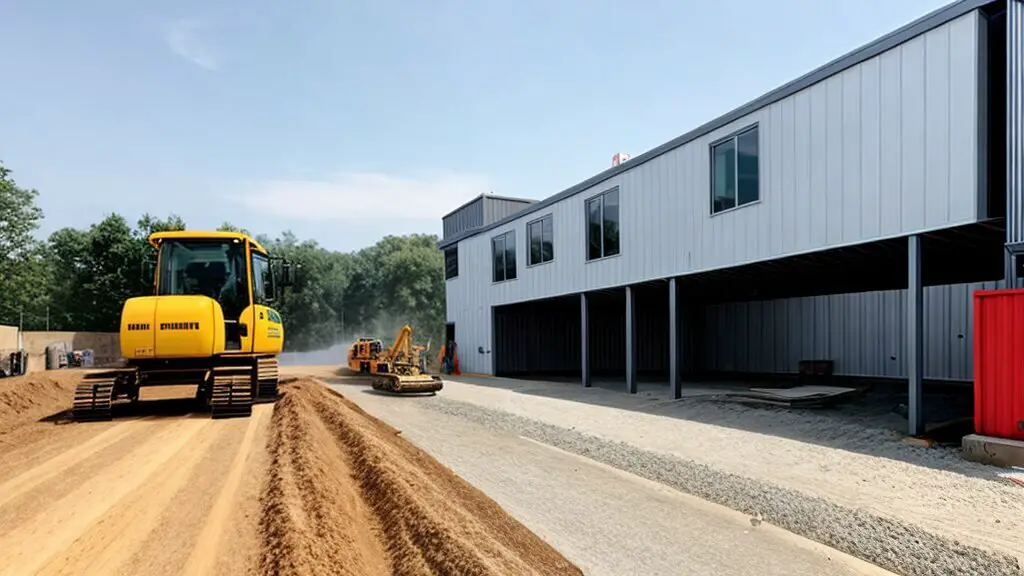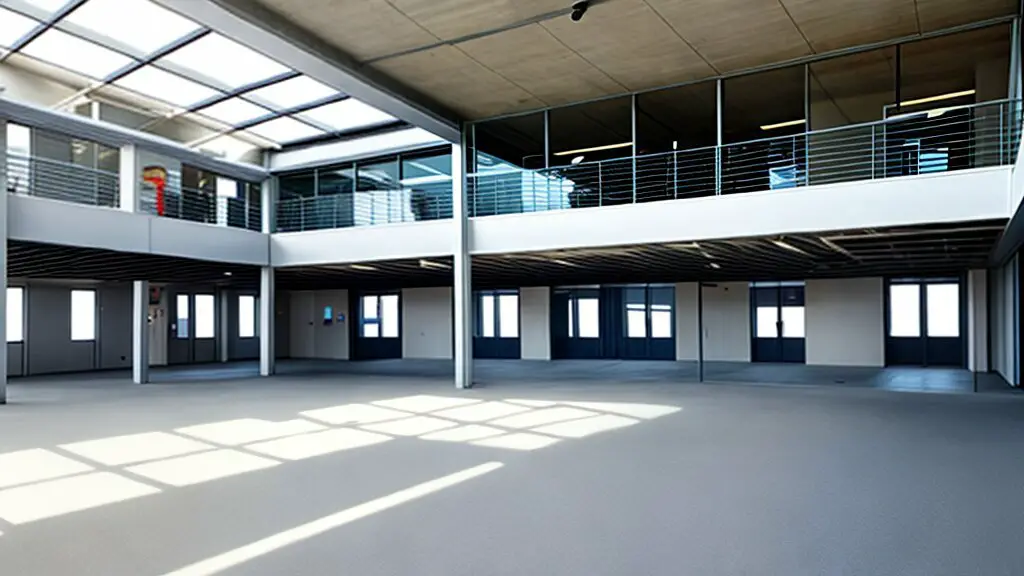Types of Construction: Exploring Various Construction Methods
Construction projects are the backbone of infrastructure development in India. From commercial complexes and residential buildings to bridges and roads, construction projects come in different types and categories. Each project has specific requirements and demands, catering to diverse infrastructure needs.
In this section, we’ll provide an overview of the different types of construction projects in India, categorized based on their specifications and project requirements. Understanding these categories can help stakeholders make informed decisions, plan better, and ensure successful project execution.
Key Takeaways:
- There are different types of construction projects in India.
- Each project category has specific requirements and demands for different types of construction.
- Understanding the different types of construction is crucial for successful planning and execution.
Types of Construction
A Class Construction
A-Class Construction projects prioritize durability, safety, and aesthetic appeal. These projects typically use premium materials and advanced construction techniques to ensure that the end result is of the highest quality. The specifications and requirements of A-Class Construction projects are typically determined by the client’s needs and expectations.
One of the key characteristics of the A-Class types of Construction is its ability to withstand harsh environmental conditions, including extreme weather, earthquakes, and other natural disasters. This is achieved through the use of high-quality materials such as concrete, steel, and masonry, along with advanced construction techniques such as reinforced concrete structures, seismic dampers, and other protective features.


Another important consideration in A-Class Types of Construction is the aesthetic appeal. These projects often feature unique architectural designs, high-end finishes, and other decorative elements that contribute to the overall visual appeal of the structure. The goal of A Class Types of Construction is to create a visually stunning and functional structure that meets the needs of the client.
Considerations for A-Class Construction in India
While A – Class Construction projects are a desirable investment, they may not always be feasible in certain areas of India due to their high costs. Additionally, the availability of high-quality materials and skilled labor may be limited in certain regions, making it challenging to execute A-Class projects with the desired level of quality.
Despite these challenges, A-Class Construction is an important component of India’s infrastructure development, particularly in urban areas where high-quality buildings are necessary for commercial and residential purposes. With careful planning and execution, A-Class projects can contribute to the growth and development of India’s construction industry.
B Class Construction
B Class Construction is the most common type of construction in India, accounting for a significant proportion of all construction projects. This category represents standard-quality construction projects that meet basic safety and functional requirements. These projects often use moderately priced materials and follow standard construction practices.
Structures built under B Class Construction are typically designed to last for a specific period, usually between 15 to 30 years, depending on the intended use. This category includes small residential buildings, commercial and institutional structures, and other small-scale constructions.
Although B Class Construction is considered standard quality, it still requires careful planning and execution to ensure that the structure is safe and functional. Contractors must follow safety protocols and use appropriate materials to ensure that the structure meets the required standards.
| Pros | Cons |
|---|---|
| – Cost-effective – Standard Quality – Meets basic safety and functional requirements |
– May not be durable in the long run – Limited scope for aesthetic appeal – Unsuitable for large-scale projects |
While B Class Construction fulfills basic safety and functional requirements, it may compromise on durability or aesthetic appeal. This category focuses on cost-effectiveness while ensuring minimum safety standards.
The viability of B Class Construction projects depends on various factors such as location, materials availability, budget, and local regulations. In many cases, contractors and builders may opt for B Class Construction to meet specific needs or project requirements.
Overall, B Class Construction serves as a viable option for various projects, meeting basic safety and functional requirements while remaining cost-effective. However, stakeholders must consider the limitations and potential risks associated with this category and implement necessary measures to ensure the safety and longevity of structures built under B Class Construction.


B Class Construction
B Class Construction represents standard quality construction projects that meet basic safety and functional requirements. These projects typically use moderately priced materials and follow standard construction practices. As such, they are the most common type of construction project undertaken in India.
B Class Construction is suitable for buildings that do not require premium materials or advanced construction techniques. Examples of such buildings include residential homes, small commercial spaces, and community centers. These projects usually take less time to complete and are less expensive than A-Class Construction projects.
Characteristics and Considerations
B Class Construction follows basic construction practices and procedures. It involves the use of materials that are moderately priced and easily available in the market. These projects are designed to meet basic safety and functional requirements, but they may not prioritize aesthetic appeal or durability.
One of the key considerations for B Class Construction projects is to ensure that the construction follows the standard practices and regulations set by the government. This includes obtaining necessary permits and approvals, adhering to safety standards, and following environmental regulations.
| Advantages | Disadvantages |
|---|---|
| Cost-effective | May compromise on durability and aesthetic appeal |
| Quick to complete | May require frequent maintenance and repairs |
| Uses readily available materials | May not be suitable for certain building types or locations |
Despite its limitations, B Class Construction is an essential part of India’s construction industry. It caters to the needs of the middle-class population and meets the basic infrastructure requirements of the country.


As the construction industry in India continues to grow, there is a need to focus on improving the quality and durability of B Class Construction projects. This can be achieved through the use of better-quality materials and modern construction techniques, while still maintaining cost-effectiveness.
Materials Quality and Costs in India
The quality of materials used in construction projects is an essential factor that affects the durability, safety, and overall performance of the structure. In India, the construction industry is heavily influenced by the availability and pricing of materials.
Quality: The quality of materials varies depending on their source and manufacturing process. Some of the most commonly used materials in construction projects include cement, bricks, steel, and concrete. However, the quality of these materials can vary widely based on factors such as the location of the manufacturing facility, the quality of raw materials used, and the manufacturing process itself.
| Materials | Quality Factors |
|---|---|
| Cement | Fineness, compressive strength, setting time |
| Bricks | Compressive strength, water absorption, efflorescence |
| Steel | Grade, yield strength, tensile strength, elongation |
| Concrete | Compressive strength, slump, workability |
Costs: The cost of construction materials is influenced by various factors such as demand and supply, transportation costs, and government policies. Some of the most commonly used materials in the Indian construction industry are cement, sand, steel, and bricks. The prices of these materials can vary significantly based on their location, availability, and quality. The government of India has implemented various policies and initiatives to promote the use of cost-effective and sustainable construction materials such as fly ash bricks and pre-cast concrete.


The Indian construction industry is expected to continue to grow significantly in the coming years, with rising demand for infrastructure and housing. It is crucial to consider the quality and costs of materials in construction projects to ensure optimal performance, durability, and sustainability. By adopting innovative technologies and sustainable practices, the industry can overcome existing challenges and achieve long-term growth and success.
Future, Importance, and Limitations
In India, the construction industry plays a significant role in the country’s economic growth. With rapid urbanization and increasing demand for infrastructure, the construction sector is expected to continue to expand in the coming years. However, the future of the industry is also subject to several limitations and challenges.
Importance of Different Construction Categories
Each category of construction presents different specifications and demands. A-Class Construction is essential for high-end structures where safety, durability, and aesthetics are critical. B Class Construction is suitable for basic residential and commercial buildings that require standard quality but at an affordable cost. C Class Construction caters to the lower-income segments, where affordability is the primary requirement.
Overall, all three categories of construction are essential in meeting diverse infrastructure needs in India.
Limitations and Challenges
One of the primary challenges faced by the Indian construction sector is the lack of standardization and quality control. While A-Class Construction is generally subject to rigorous quality control, B and C Class Construction often have lower quality standards. This can lead to safety concerns, including inadequate foundations, poor seismic resistance, and substandard materials.
Additionally, limited access to modern technology, lack of skilled labor, and bureaucratic hurdles can also pose significant limitations to the construction industry’s growth and development in India.
Solutions and Future Developments
To overcome these limitations, the Indian government has introduced several reforms, including the Real Estate (Regulation and Development) Act, of 2016, aimed at promoting transparency, standardization, and accountability in the construction sector. Additionally, initiatives such as the Pradhan Mantri Awas Yojana (PMAY) and Smart Cities Mission are driving growth and development in the affordable housing and urban infrastructure sectors.
Furthermore, the adoption of modern technologies such as Building Information Modeling (BIM) and prefabrication can optimize construction processes, improve efficiency, and ensure better quality control. The use of sustainable and eco-friendly materials is also gaining traction in the construction industry, indirectly contributing to the country’s environmental goals.
In conclusion, while the Indian construction industry faces several limitations and challenges, incorporating standardization, quality control, and modern technologies can help overcome these challenges and drive future growth and development.


Conclusion
Construction in India is a diverse and complex field, encompassing a multitude of project types and categories. Understanding the distinctions between A Class, B Class, and C Class Construction is essential for stakeholders to make informed decisions about project planning and execution.
While A-Class Construction represents the highest quality and durability, it may not always be the most cost-effective option. B Class Construction offers a balance between quality and affordability, while C Class Construction focuses on basic functionality at a minimal cost.
The Importance of Materials Quality and Costs
Regardless of the construction category, material quality plays a crucial role in determining the longevity and safety of the structure. It is essential to consider market trends, availability, and pricing when selecting materials for a project.
The Future of Construction in India
The construction industry in India is poised for rapid growth, with a focus on sustainable and eco-friendly practices. However, there are several limitations and challenges that stakeholders must overcome, including insufficient infrastructure and a shortage of skilled labor.
By considering the importance of construction types, materials quality, and future developments in the industry, stakeholders can make informed decisions to achieve optimal outcomes and address existing limitations.
Thanks For the Great Attention!
Good Bye & Take Care
Happy Learning
Also, Read,
1000sqft House Plinth Beam Cost
POP Vs Gypsum Vs PVC Vs Grid False Ceiling – An Ultimate Comparision
Wall Mounted vs Floor Mounted Toilets
Related video
Types of Construction
FAQ
Q: What are the different types of construction projects in India
A: Construction projects in India can be categorized into three main types: A Class Construction, B Class Construction, and C Class Types of Construction.
Q: What is A Class Type of Construction?
A: A Class Construction refers to high-quality construction projects that prioritize durability, safety, and aesthetic appeal. These projects often involve the use of premium materials and advanced construction techniques.
Q: What is B Class Types of Construction?
A: B Class Construction represents standard quality construction projects that meet basic safety and functional requirements. These projects typically use moderately priced materials and follow standard construction practices.
Q: What are C Class Types of Construction?
A: C Class Construction refers to economical construction projects that fulfill basic functionality needs but may compromise on durability or aesthetic appeal. These projects focus on cost-effectiveness while ensuring minimum safety standards.
Q: What factors influence material quality and costs in the Indian construction industry?
A: The quality of materials used in construction projects is influenced by various factors, including market trends, availability, and pricing.
Q: What is the future of different types of construction in India?
A: The future prospects of different types of construction in India are diverse and cater to the evolving infrastructure needs. Each category serves specific requirements and demands.
Q: What are the limitations and challenges associated with each type of construction?
A: Each type of construction has its own limitations and challenges. Class Construction may be expensive, B Class Construction may lack certain premium features, and C Class Construction may compromise on durability and aesthetics.
Q: How can stakeholders overcome the limitations and challenges of different types of construction?
A: By considering materials quality, costs, and future developments, stakeholders can make informed decisions and implement potential solutions for improvement.



